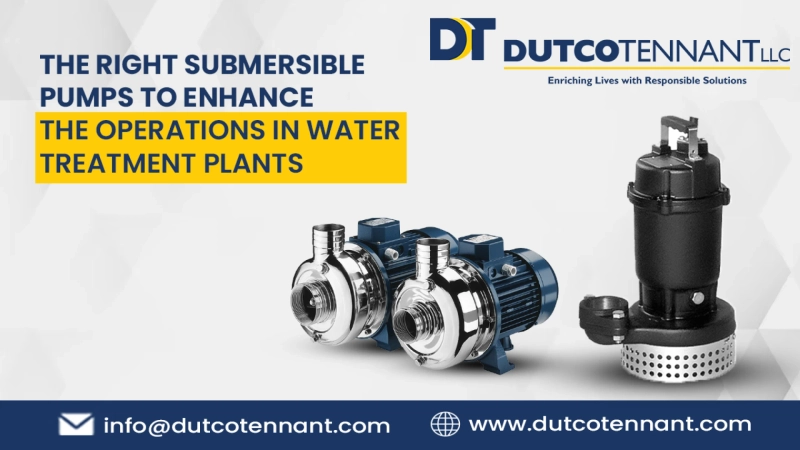Submersible pumps are high in demand due to their impressive versatility and overall reliability. Whether it's for industrial or domestic use, submersible pumps are readily available in the market.
With a bunch of benefits such as self-priming and minimised cavitation, these pumps are designed to handle almost any media. Additionally, if you choose quality brands like Ebara pumps then you are sure to get the best service.
However, going with the best brand is not enough. You have to consider a few key factors to make the right choice for submersible pumps. This is why, in this guide we have enumerated a few essential factors that will help you determine the suitable submersible pump for your project.
Without further ado, let’s take a look at the list, shall we?
Type of fluid
Now, although submersible pumps are designed to handle both solids and liquids, it is important to consider the type of fluid for which the pump will be used. There are different types of submersible pumps that are specialised to handle specific fluid.
For instance, grinder pumps are used for pumping fluids containing solids and semi-solids. It grinds through the solid particles breaking them into smaller pieces for easy transfer.
Alternatively, there are cutter submersible pumps that work similar to grinder pumps. However, they are more powerful and are able to handle fluids with tougher solid particles. The sharp blades are perfect for cutting them and easy transfer.
Considering the type of fluid will help you make the right choice for submersible pump type.
Flow Rate and Total Dynamic Head
Flow rate and total dynamic head are critical factors in pump selection. Flow rate refers to the volume of fluid that needs to be pumped per unit of time, usually measured in gallons per minute (GPM) or litres per second (L/s).
Total dynamic head (TDH) represents the total resistance the pump must overcome to move the fluid through the system, including friction losses and elevation changes.
Calculate the required flow rate and TDH accurately to choose a pump that can meet the demands of your system effectively.
Pump Capacity and Power
The pump capacity or discharge capacity indicates the maximum volume of fluid a pump can handle. It is vital to ensure that the pump's capacity matches or exceeds your system's requirements.
Additionally, consider the power requirements of the pump, including the voltage and electrical supply available. Choosing a pump with appropriate capacity and power ensures efficient operation.
This also helps to avoid potential issues such as underperformance or motor overload.
Pump Material and Construction
Submersible pumps are exposed to harsh environments, including corrosive fluids and abrasive particles. Therefore, it is crucial to select a pump that is constructed with durable and corrosion-resistant materials.
Common materials used for pump construction include stainless steel, cast iron, and thermoplastic. Consider the nature of the fluid being pumped and the environmental conditions to choose a pump that can withstand the specific demands of your application.
Motor Protection and Cooling
Submersible pumps are equipped with electric motors that are immersed in the pumped fluid for cooling. Look for pumps with motor protection features such as thermal overload protection and moisture-sealed insulation.
These safeguards help prevent motor damage and extend the pump's lifespan. Additionally, ensure the pump design allows efficient heat dissipation to prevent overheating and maintain optimal motor performance.
Pump Efficiency and Energy Consumption
Energy efficiency is a significant consideration when selecting submersible pumps, as it impacts both operational costs and environmental sustainability. Look for pumps with high efficiency ratings. Since they tend to consume less energy while delivering the required flow rate and pressure.
Efficient pumps not only save on electricity bills but also reduce carbon emissions. Check for pump labels or manufacturer-provided data to compare the efficiency of different models and make an informed decision.
Maintenance and Serviceability
Regular maintenance is essential to keep submersible pumps operating at peak performance. Consider the ease of access and serviceability of the pump when making your selection.
Look for pumps that have removable parts and clear access to the motor, impeller, and other critical components. Easy-to-maintain pumps simplify troubleshooting, repairs, and routine maintenance tasks, reducing downtime and overall costs.
Conclusion
Choosing the right submersible pump requires careful consideration of various factors. By assessing the type of fluid and other factors mentioned in this list, you can identify a pump that will meet your specific demands effectively.
Investing time and effort in selecting the right submersible pump will lead to improved performance and longevity. Moreover, it will also benefit you with cost savings in the long run.
Remember, if you have specific requirements or are unsure about any aspect of pump selection, consult with experts or professionals. Afterall, they are the ones that you can trust to ensure you make the best choice for your pumping system.



